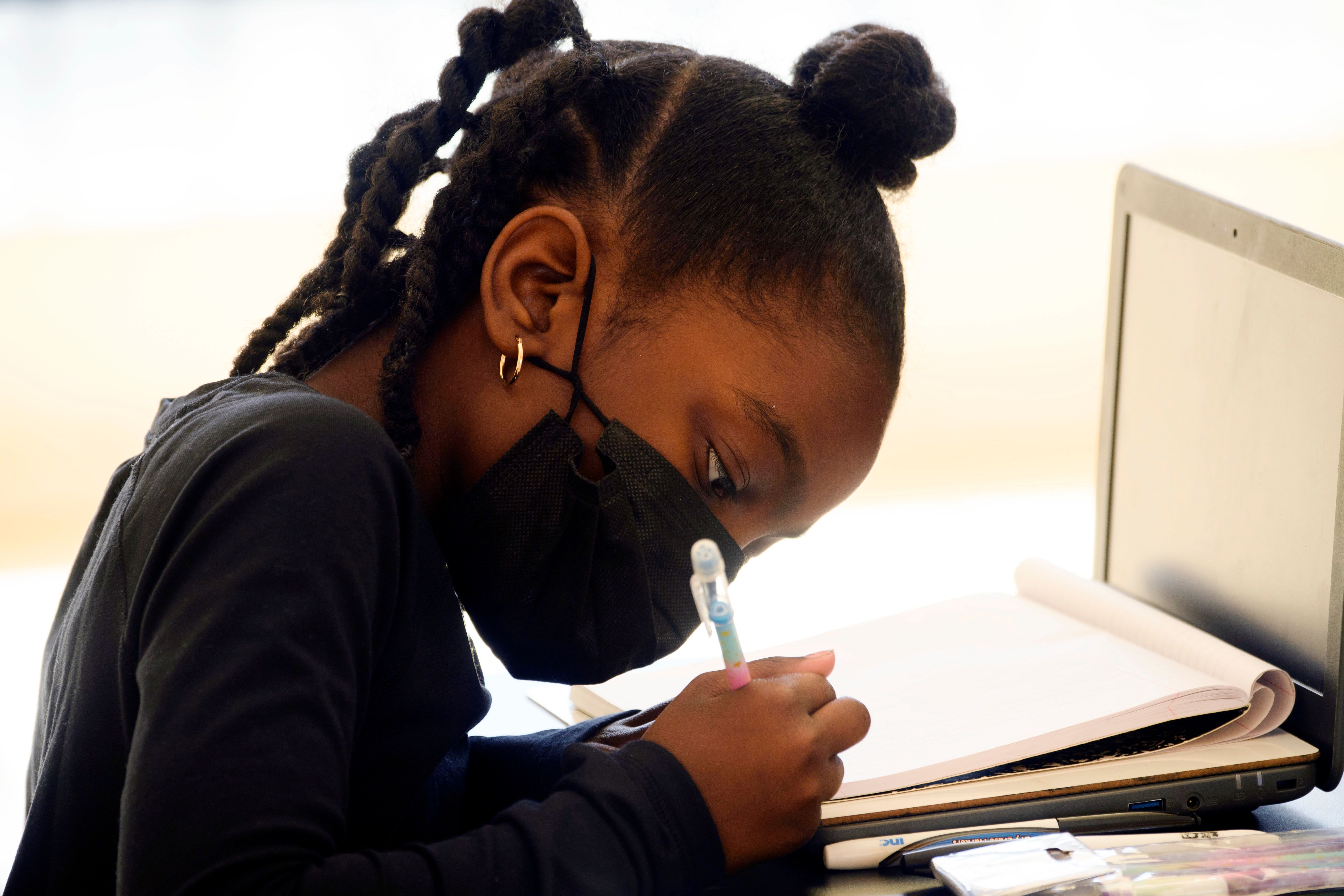A child attends an online class at a learning hub inside the Crenshaw Family YMCA during the Covid-19 pandemic on February 17, 2021 in Los Angeles, California.
Patrick T. Fallon | AFP | Getty Images
It’s almost one year into the coronavirus pandemic and students are still suffering, especially Blacks and Hispanics.
Many schools around the nation have yet to open their doors to students, while some are offering a mix of in-person and virtual learning (called hybrid). Others have fully opened their classrooms.
President Joe Biden is pushing for schools to reopen as soon as possible, aiming to have K-8 students be back in school full-time by the time the president has been in office for 100 days.
“Learning loss is happening. It is real and it is inequitable,” said Jimmy Sarakatsannis, a partner in McKinsey & Company’s Washington, D.C., office.
His firm updated its June report on Covid 19’s impact on education in December. It estimates approximately 60% of K-12 students started the school year fully remote. Meanwhile, 20% began with a hybrid model — a mix of both remote and in-person instruction, and 20% went back into classrooms full time.
If those numbers hold throughout the school year, students will lose nine months of math learning, the report predicted. However, students of color will see a loss of 11 months or 12 months, compared to seven months to eight months for white students.
That, in turn, will have long-term implications on their earnings and their health.
McKinsey’s June report found that white students would earn $1,348 a year less (a 1.6% reduction) over a 40-year working life, Black students would bring in $2,186 a year less (a 3.3% reduction) and Hispanic students would earn $1,809 less (3%).
“One of the great travesties of this pandemic is that it has hit the most vulnerable among us the hardest,” said Silicon Valley-based Emma Dorn, global education practice manager at McKinsey and co-author of the report.
“There really is an imperative now to direct those resources to the students who need it most.”
When will schools reopen?
US President Joe Biden participates in a CNN town hall at the Pabst Theater in Milwaukee, Wisconsin, February 16, 2021.
SAUL LOEB | AFP | Getty Images
President Biden is focusing on the younger grades first in his reopening plan.
“They’re the easiest to open, the most needed to be opened in terms of the impact on children and families having to stay home,” Biden said last week in a CNN Town Hall.
Yet, the Center for Disease Control and Prevention’s recently released guidelines would keep more than 90% of the schools from fully reopening.
When asked about that guidance on NBC’s “Today Show” last week, Vice President Kamala Harris said, “What the CDC, what they have recommended, are exactly that, recommendations, about how to reopen safely if they’ve been closed, how to stay open if they’ve been open.”
She also called for making teachers a priority to get vaccinated.
“We all want our kids to get back to school as quickly as possible and as safely as possible,” Harris told Today.
What can be done to address learning loss
Significant investments will be needed to make up for lost learning once the pandemic ends, the McKinsey report said.
One example is so-called acceleration academies, which consist of small groups of eight students to 12 students. They would get 50 hours of targeted instruction over two weeks, which would aim to give them back 6 months of learning. At approximately $1,600 per student, it would cost $42 billion to reach 50% of the schoolchildren in the U.S.
More from Invest in You:
In addition to Covid relief, Biden has long-term plans to bring back jobs
Black leaders share their advice on how to help Black Americans succeed
President Biden pledges to fix the racial wealth gap. Here are his plans
There is also high-intensity tutoring, which is 50 minutes of daily tutoring by paraprofessionals for a year. There are two students per teacher, at a cost of $2,500 per student, and they would gain one to two years of learning. The cost: $66 billion to reach half of the students.
“One of the distinguishing drivers of U.S. success is Americans’ ability to innovate and mobilize around ambitious goals,” the authors wrote.
For instance, the country spent $250 billion to put a man on the moon in 1969, they pointed out.
“A similar investment, and focus on innovation, is needed now in education — with deeper collaboration across public, private, and social sectors.”
SIGN UP: Money 101 is an 8-week learning course to financial freedom, delivered weekly to your inbox.
CHECK OUT: Warren Buffett: Don’t invest this way or you’re ‘certain’ to get ‘worse-than-average results’ via Grow with Acorns+CNBC.
Disclosure: NBCUniversal and Comcast Ventures are investors in Acorns.
